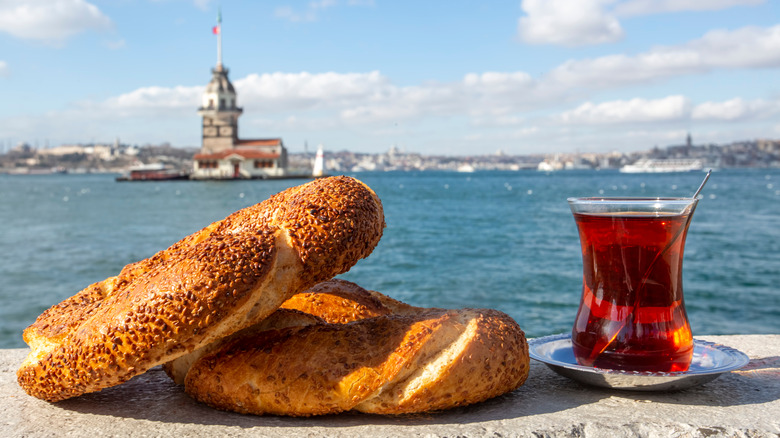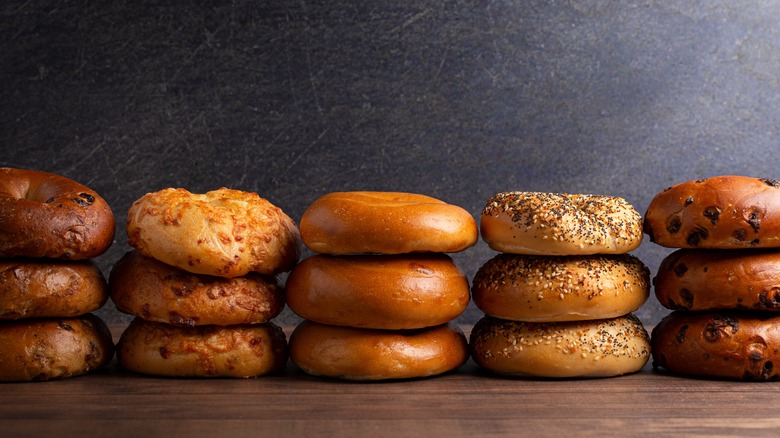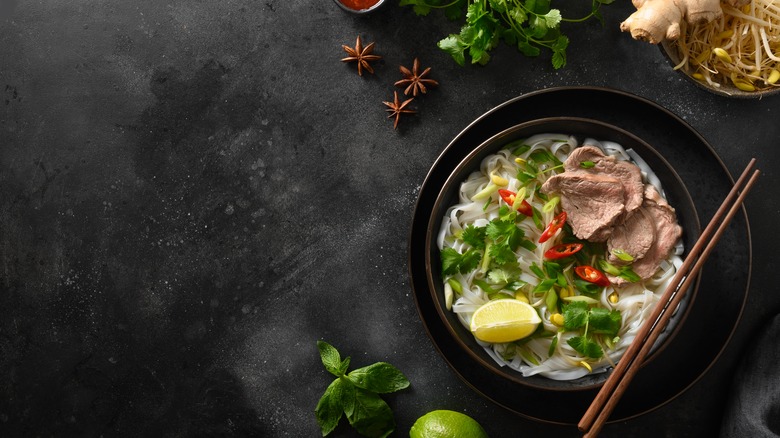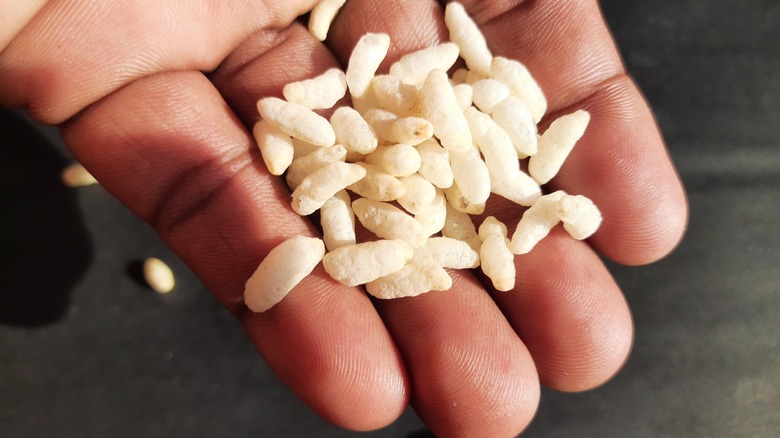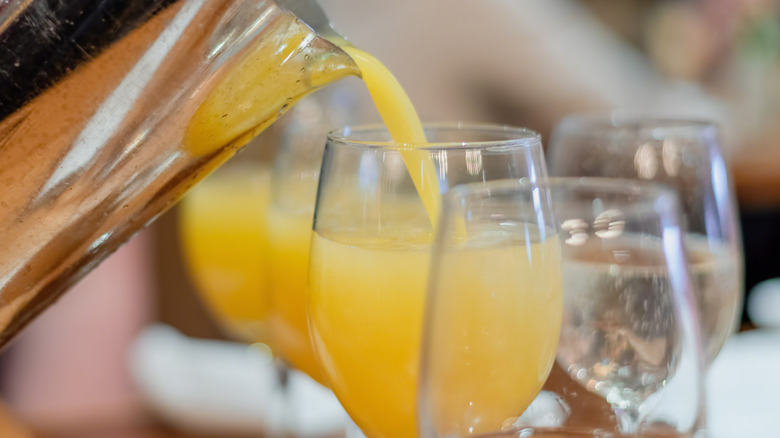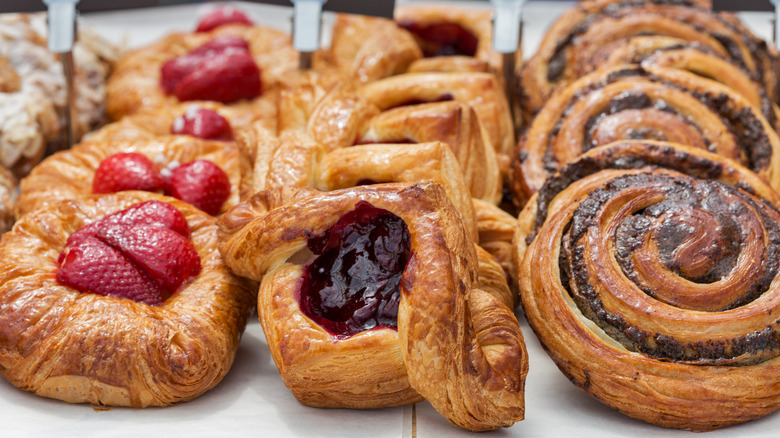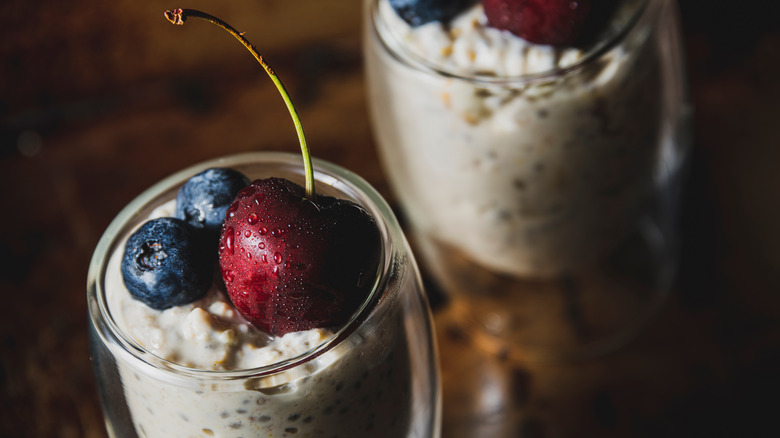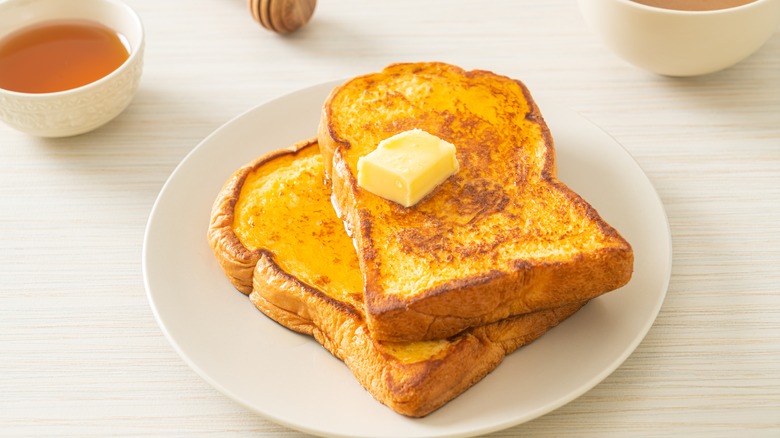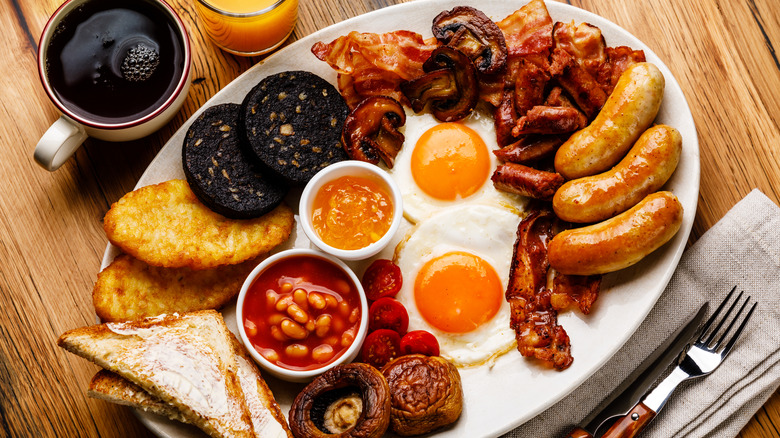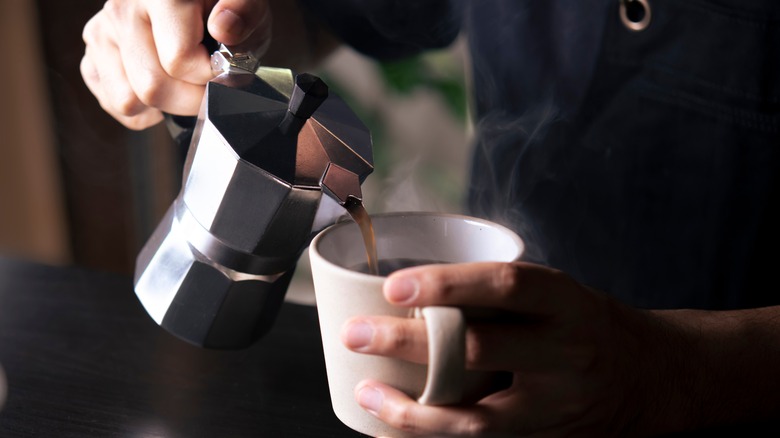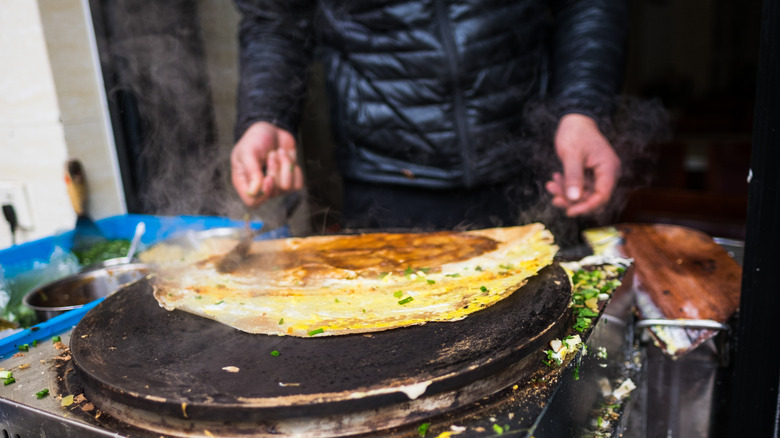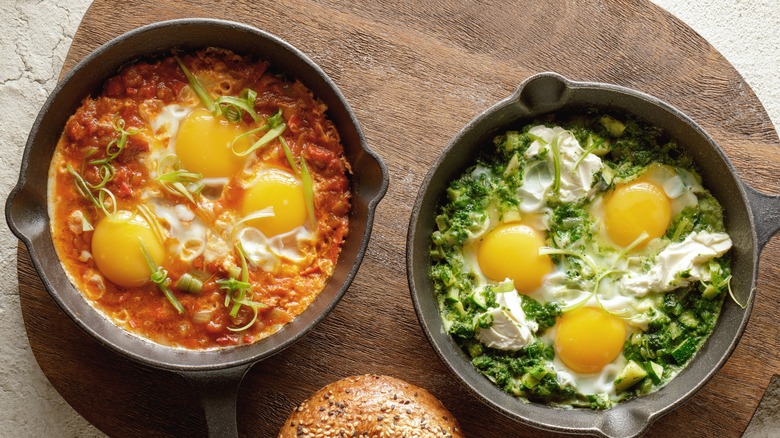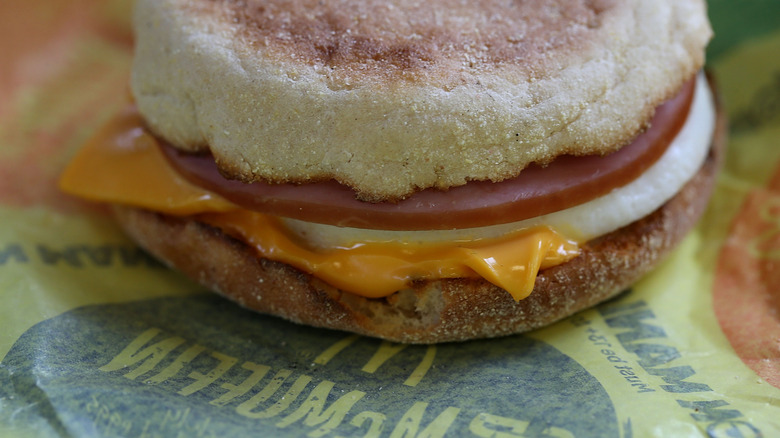What Popular Breakfast Foods Looked Like When People First Started Eating Them
As long as there have been humans, we've been sleeping, and as long as we've been sleeping, we've needed to have breakfast. Many cultures even have a tradition of second breakfasts — they aren't mashups of breakfast and lunch, and they're not just for Lord of the Rings fans! Merienda in Spain and Drugie Sniadanie in Poland fill the gap between early coffees and late lunches, and many in the German state of Bavaria enjoy Frühschoppen — a late morning beer along with some sausage, bread, and mustard .
Anyone with curiosity and an appetite can get excited about cross-border breakfasts at strange times during the day — especially if it comes with a license to day drink without supporting the "Brunch Industrial Complex" . There's wisdom to be gained in contrasting our cherished morning rituals with exotic variations. However, there's even more to be unlocked by looking back through the centuries to the times when particular breakfast foods were new.
We will never know what it is like to wake up in Ancient Rome, medieval Beijing, or on a rocky hillside in Abyssinia over a thousand years ago — but thanks to breakfasts that we still enjoy today, we can dip our toes into the shoes of the people who did. Exploring the history of food is an exercise in remembering that the people of the past were just like us — they needed something good to get them out of bed and ready for the day, and our tastes are remarkably similar.
Bagels
Americans could be forgiven for believing that these chewy-crackly circles of cream cheese carrying carbs came from New York City, for all of the hype with which the Big Apple claims them. Like pizza, halal carts, and the Statue of Liberty, bagels may have become iconic in NYC, but boast a more complex history than you might imagine.
The most eye-catching origin story for the roll-with-a-hole comes from Austria in the 1680s. The King of Poland had just saved Vienna from two months of siege by the armies of the Ottoman Empire, personally leading over 18,000 horse warriors in the largest-ever known cavalry charge to liberate the city. To commemorate the historic moment, a Viennese baker started making bread shaped like stirrups — also known as "beugel" in German.
However, it seems the bagel predates this tale. According to NPR, the thing that makes a bagel a bagel is boiling water — not necessarily NYC water, either! This is the step that creates the crucial textural elements of a bagel. There is a Polish bread called "obwarnazek" that can be traced back to the late 1300s, and the name for these circular, seed-sprinkled breads literally translates to 'par-boiled' . Per The Atlantic, the boiling before baking method might have been added as a technicality to avoid restrictions on Christians eating bread made by Jewish bakers.
While you might struggle to find a schmear or lox you can trust, the best bagel bakeries of medieval Europe were probably recognizable to modern eaters.
Pho
While Vietnam has a well-deserved reputation as a tropical vacation destination, winters in the North can get nippy. Especially in the mornings, before the sun can burn off the cloud cover. Pho is the perfect breakfast for a foggy winter's morning — savory, meaty, and filling — much like a lot of the more indulgent breakfast options we all find ourselves craving when the days get shorter, but with none of the heaviness. If you're worried it won't be hearty enough for you, even the most austere places let you add extra meat and probably an egg or two, and most will have many more options.
According to the BBC, 1898 is the probable beginning of pho, when future French president Paul Doumer, then governor of Indochina, ordered the construction of Indochina's largest silk plant at Nam Dinh, south of Hanoi. Eventually, the plant would employ 18,000 workers, and it made Nam Dinh a boomtown. Workers flooded in, including a lot of French builders with a taste for beef. Local soup sellers transitioned from river crabs and water buffalo to beef and especially beef bones — now available for free from overwhelmed butchers — and so pho was born . It seems like the bowls may have been smaller, more of a snack size than the bathtubs we often see today! Originally pho sellers would be roadside, carrying pots of pho heating on stoves on shoulder poles — another reason to stick to the cool morning hours!
Puffed Rice
Puffed Rice arrived in America with a snap, crackle, and bang. It was the 1904 World's Fair, and Prof. Alexander P. Anderson was heating 48 pounds of raw rice in a battery of eight twenty-inch cylinders. The pressure built beyond the critical point, and clouds of fluffy puffed rice flew into the awaiting forty-foot-wide receptacle. The professor and his assistants sold the new explosive rice just like popcorn to the tune of over 250,000 bags by the end of the fair. Anderson was already working for the Quaker Oats Company, and so the very next year saw Puffed Rice hit the shelves as a brand-new cereal.
However, puffed rice has been a staple of food in India for centuries. You can find it on the city streets mixed with spices, chutneys, nuts, and other textural delights in jhal muri, aka bhel puri, depending where you are — tangy chaats eaten as on-the-go snacks. Puffed rice with spiced potato hash is a typical Bengali breakfast, and eating puffed rice with mutton curry — known as mudhi mansa, referred to as the breakfast of warriors — has associations going back as far as Emperor Ashoka the Great of the 2nd Century. So it seems that the original bowls of breakfast puffed rice weren't served with milk or sugar, but rather chutneys, curries, mustard oil, and spices!
Hair of the Dog
Booze in the morning has been around since the Ancient Greeks sat down to "akratisma," literally the time when you eat "akratos" — bread soaked in undiluted wine. Medieval English workers also drank beer for breakfast, though not because they couldn't get clean water, and likely not to get drunk either. "Small beer," as it was known, was pretty low in alcohol and probably had a thick, gloopy texture due to being unfiltered. Back then breakfast beer was more about fueling up for a day's work than anything else. Other classic breakfast tipples have a shorter history than you might expect.
One winter in the middle of World War II, Chef Joe Sheridan of the Foynes Terminal coffee shop and restaurant, near modern-day Shannon International Airport in Ireland, got a message that a flight heading to New York was turning back due to a storm. He created a warming mixture of coffee, cream, and Irish whiskey. As the legend goes, when one of the grateful passengers asked if the coffee was Brazilian, Chef Joe replied "No, this is Irish Coffee," and the name stuck.
Apparently, Alfred Hitchcock popularized brunchtime mimosas in California in the 1940s, but the original drink dates back to the 1920s. Buck's Club created Buck's Fizz in 1921, and the original mimosa was made in Paris four years later — the only difference between the two is that, strangely, the French one has less champagne.
Danish Pastries
In Canada, Canadian Bacon is called back bacon, or peameal bacon ; in Turkey, a turkey is called a "Hindi" ; and in Denmark, a Danish pastry is called Viennese bread, or more generally, "morning bread." National naming conventions can seem counterintuitive and confusing, but they make a lot more sense when you remember that food is rarely named by universities or governments who want to educate and inform the public — these names are the result of centuries-old viral marketing.
In 1850, the bakers of Denmark went on strike for better working conditions, and rather than go hungry, the well-to-do of Copenhagen sent for help from Austria. These picket-breaking pastry bakers weren't well trained in the traditional Danish baking style, but brought with them puff pastry, unseen before on the Scandinavian streets. By the time the strike was over, the locals had developed a taste for these new, flaky, sweet breakfast treats. Determined not to be outdone by the Austrian innovation, the Danish bakers stole the name "Viennese," doubled down on richness by adding eggs to the puff pastry dough, and set the standard we know today . Around 60 years later, Danish immigrant LC Klitteng came to the U.S., and his baked goods — named after his nationality — swept the nation. Klitteng even baked Danishes for the wedding of President Woodrow Wilson in 1915.
So the first Danishes would have been pretty recognizable to modern eyes, but they would have been labeled as Austrians.
Muesli
In the 1860s, a heartbroken Queen Victoria needed a break in order to recover fully from the death of her beloved Prince Albert. After years of planning, she took a five-week holiday in the mountains of Switzerland, and once tales of her returning to London a new woman spread around Europe, she kickstarted the Alpine nation's reputation as a health tourism destination.
Thirty years later, Dr Maximilian Oskar Bircher-Benner was running his own "Vital Force" sanatorium in the beautiful hills overlooking Lake Zurich. It was a resort where people would undertake his program of treatments to cure their ailments, which ranged from constipation to depression. Dr. Bircher-Brenner's methods focused on raw, whole foods, outdoor air, strict discipline, and exercise. Bircher-Brenner attracted attention from the media and celebrities, and sold self-help books much like modern-day health influencers.
As part of the program, patients ate a bowl of muesli before every meal, rather than just for breakfast. The focus back then was actually on the apple, which was grated and soaked in water along with the oats and nuts — the original name for muesli was "Apple Diet Meal," and muesli translates as "little mush." The earliest muesli-eaters would have seen themselves as eating an amuse-bouche of apple purée with some added texture in the form of oats and nuts. It would not be an unsweetened breakfast cereal with a little fruit added — though much like many modern muesli enthusiasts, they were probably more motivated by medical, rather than culinary, concerns.
French Toast
French toast is a chef's kind of comfort food. Simultaneously rich and luxurious, evoking memories of childhood spoilings and weekend decadence, as well as making good use of leftover bread and everyday kitchen staples, it's a classic for a reason. Unsurprisingly, though, it isn't actually from France!
The earliest mention of what we would call 'French Toast', known to the french as "pain perdu," the Brits as "Eggy Bread," comes from what might be the oldest cookbook in the world, according to Tasting Table. "De Re Coquinaria" is usually associated with the famous Roman foodie Marcus Gavius Apicius, but it is likely he didn't write the recipes at all — rather this nobleman's fame for hosting feasts that celebrated the finest dishes in the empire made his name synonymous with extravagant cooking for centuries after he died.
According to the translation of the oldest copy of Apicius's tome that still exists, cooks in ancient Rome would slice fine white bread with the crusts removed into thick pieces. These crustless chunks are then soaked in milk and beaten eggs before being fried and drizzled in honey. So any time-traveling foodies with a crust-averse kid to appease could probably find some comforting and sweet custardy fried bread by asking around the agora — but remember to call it "Pan Dulcis," because France won't be invented for another few centuries yet.
Full English Breakfast
British people's obsession with breakfasts dates from the Dark Ages, and like a lot of things in English society, it began at the tables of the ruling nobility. Nowadays, there is a fixedness to the Full English — bacon, egg, sausage, baked beans, and toast, minimum. Usually grilled mushrooms and/or tomato are on offer as the vegetable part of the dish. Black pudding, a British blood sausage, is a common addition, often served with white pudding in Ireland, so many an Irish breakfast will have three different sausage varieties, as well as the highest potato potential. Full Scottish breakfasts have square sausage, and sometimes haggis, and if you breakfast in Wales you will encounter lavercakes — made from edible seaweed.
This standardization happened in the Edwardian era, when trains, tourism, and industrialization made it easier for the middle classes to afford a big breakfast, hotels set hospitality standards, and kitchens became more focused on efficiency.
The original tradition of the Full English was likely a hunting breakfast, served by the staff of landed gentry to impress their guests. This extravagant feast had up to 24 dishes by the 1800s, which would show off the wealth of seasonal produce grown on their estates, prepared by their servants to the local style. Fishes, fruits, meat pies, kidneys on toast, and other dishes straight from the pages of Game of Thrones made up the original Full English, but what hasn't changed is this breakfast's connection to national identity.
Coffee
Coffee has become one of the world's great nonnegotiables. Caffeine, the stimulant that makes coffee psychoactive and is also found in tea, is regularly consumed by around 90% of Americans. The fact is those dark brown cups of Joe actually make us better, smarter workers. Neurons fire quicker, dopamine starts flowing, and morning brain fog lifts — no wonder 40% of U.S. kitchens had a single-cup coffee maker in 2020.
The coffee plant from which we get the beans comes from the area around the Gulf of Aden, where the bottom of the Arabian peninsula almost meets the Horn of Africa. The most famous story is set around 800 CE and involves Kaldi, an Ethiopian goat herder. Kaldi's goats started acting strange after eating the red berries from one of the mountain bushes, and apparently he took the berries to local monks, who accidentally brewed the first cup of coffee.
Though this story is delightful, it was also probably invented centuries later. Evidence for Ethiopian nomads preparing coffee beans goes back as far as 575 CE, but according to PBS, the practice of intentionally roasting beans to create a drink we would recognize as coffee was only commonplace after around 1300. The original way that the Galla people would prepare their coffee seems to have been more like a protein-packed energy bar, sticking the stimulating berries together with animal fat or ghee for a psychoactive pre-battle pick-me-up.
Jianbing (煎饼)
Commonly called "Chinese crepes," jianbing are the ubiquitous breakfast street food of the country's populous northeast around Beijing and Shanghai. Always made fresh to order, but only taking a minute or two to make, hot, filling, portable, and full of texture, these cheap and tasty pancakes fuel millions of mornings.
Though vendors' recipes vary, and rogue fillings are available, the basic jianbing components are a thin pancake made of wheat and mung beans, egg, some kind of sweet and spicy sauce, and often the crunch of fried wontons or dough sticks. Even if you have never tried one, you may have seen them made —jianbing are great Tiktok subjects! Their modern makers spin circular grills smoothly and at high speed, and in less than a minute the dish is finished and presented to the hungry customer.
The original jianbing dates back to the warring states period (220-280 CE). Allegedly, the dish was invented by General Zhuge Liang, who was administrating Shandong province for the legendary emperor and warlord, Liu Bei. Zhuge was facing a problem — his army had no woks to cook in. Luckily, Shandong is abundant with grains, and 3rd-century armies carry a lot of shields. The order went out to the troops to mix flour and water, and cook the batter using their shields as griddles over their campfires, and the jianbing was born. We doubt they had a lot of eggs or tasty condiments though, so it was probably just a plain pancake.
Shakshuka
The hottest new brunch dish since eggs Benedict, shakshuka has gone from culinary obscurity to menu mainstay in the past 30 years. As with any trend, recipes vary wildly between restaurants, but most modern shakshukas are variations on the basic idea of cooking eggs in a spiced tomato, pepper, onion, and garlic sauce.
Many places in the Middle East and North Africa claim to be the birthplace of shakshuka — which has whole baked eggs, rather than the scramble found in Turkish menemen — but the lineage of the current shakshuka craze is direct. Libyan-Israeli restaurateur Bino Gabso took over his dad's Jaffa restaurant in the early 1990s and renamed it Dr. Shakshuka. Before then, the dish wasn't particularly popular in Israel outside of the Sephardic Jewish community that brought it with them from North Africa, where it has been a staple dish for centuries. If Dr. Shakshuka was the dish's take-off, then Ottolenghi was the moment shakshuka reached orbit — the bestselling cookbook "Jerusalem" brought shakshuka into the homes of millions.
As to how the original version looked? It probably wasn't red. The term shakshuka seems to date back further than the first tomatoes arriving from the Americas. However, the key to shakshuka's appeal is that it is a cheap and comforting "mix-up" (the literal Berber translation) of fresh vegetables topped with eggs. Green shakshuka is available on many menus, and is likely much closer to the original dish in looks, if not necessarily flavor.
Egg McMuffin
Herb Peterson owned a McDonald's franchise in Santa Barbara, CA, and he had an idea. He just had to figure out how to get Ray Kroc, then owner of McDonald's, to give it a try. His method? Telling Kroc that he needed to show him something in the store, but refusing to tell him what it was, despite any and all questions his boss would ask him. Peterson was worried that his idea to make a breakfast sandwich at a burger restaurant would seem too crazy over the phone and decided that the proof of the McMuffin would have to be in the eating.
Kroc made that drive to southern California in 1972, and after he had tasted the sandwich, been given a 14-point presentation by Peterson, and found a name for it (thanks to Patty Turner, wife of the then-CEO of McDonald's), he started the 3-year process of getting the nation's McDonaldses ready to serve breakfast.
It paid off, and by 1981, breakfast was 18% of McDonald's business . He described the sandwich he ate that day, the original Egg McMuffin as — "an egg that had been formed in a Teflon circle, with the yolk broken, and was dressed with a slice of cheese and a slice of grilled Canadian bacon. This was served open-faced on a toasted and buttered English muffin." In the 50 years since, the original McMuffin has barely changed from that formula, though the introduction of the McMuffin changed a lot.
